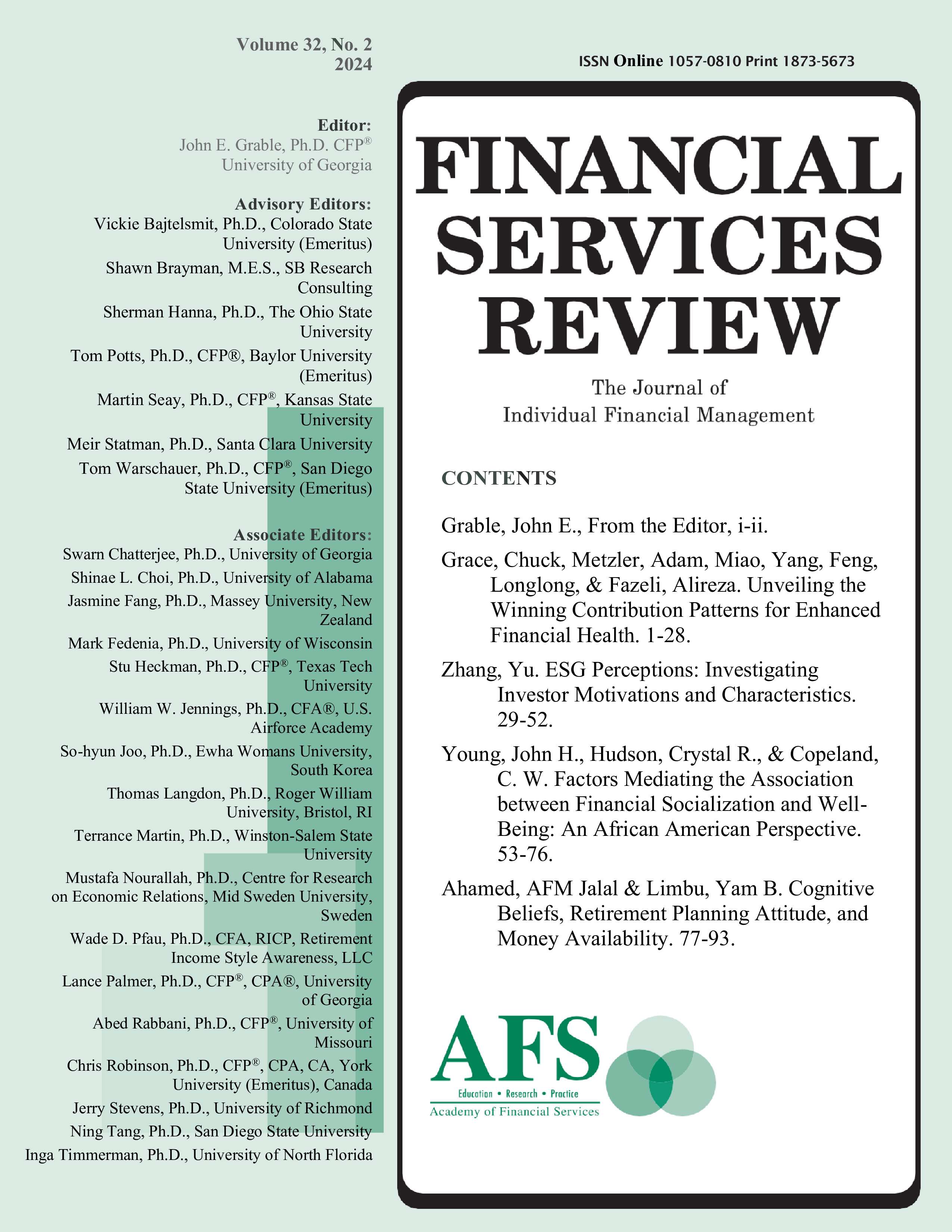Factors Mediating the Association between Financial Socialization and Well-Being: An African American Perspective
DOI:
https://doi.org/10.61190/fsr.v32i2.3513Keywords:
Financial socialization Financial well-being, financial knowledge, financial management behavior, subjective well-being, financial goal-setting, Financial Socialization, Financial Well-Being, Financial Knowledge, Financial Management Behavior, Subjective Well-Being, Financial Goal-SettingAbstract
Abstract
This study examines the relationship between financial socialization and well-being (financial and subjective) mediated by three motivations: financial knowledge, goal setting, and self-control, either directly on financial behaviors or indirectly through financial skills on financial behaviors of African Americans compared with European Americans. Researchers used an integrated concept derived from Gudmunson and Dane’s (2011) Financial Socialization framework and Fisher and Fisher’s (1992) Information Motivation Behavior Model to examine National Financial Well-Being Survey data. Researchers found a significant difference between African Americans and European Americans when “self-control” mediates directly through financial behaviors and indirectly through financial skills. There is also a significant difference in the relationship when “goal setting” mediates the relationship indirectly through skills in financial behaviors. Finally, there is a significant difference when “financial knowledge” directly mediates financial behaviors. Specifically, the findings imply that self-control is one of the most impactful factors on African Americans’ well-being.
Downloads
Published
How to Cite
Issue
Section
License
Copyright (c) 2024 Dr. John Young, Dr. Crystal R. Hudson, Dr. C.W. Copeland

This work is licensed under a Creative Commons Attribution-NonCommercial 4.0 International License.
Author(s) retain copyright and grant the Journal right of first publication with the work simultaneously licensed under a Creative Commons Attribution-NonCommercial 4.0 International License that allows to share the work with an acknowledgment of the work's authorship and initial publication in this Journal.
This license allows the author to remix, tweak, and build upon the original work non-commercially. The new work(s) must be non-commercial and acknowledge the original work.


